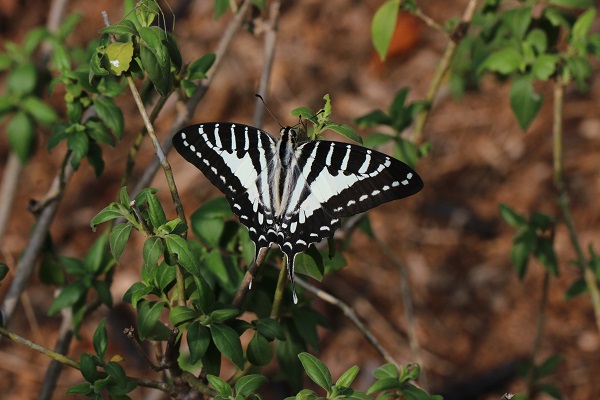Butterflies are considered bioindicators of environmental change. However, tropical butterfly diversity is threatened by habitat loss and global climate change.
In a study published in Insect Science, researchers from Xishuangbanna Tropical Botanical Garden (XTBG) revealed that interactions between human‐modified habitat change and climate change have shaped butterfly diversity in tropical rainforest and savanna.
The researchers investigated taxonomic alpha and beta diversity patterns by surveying butterflies along a gradient of land-use intensity in both humid tropical rainforest and semi-arid savanna biomes in SW China over three years. They also established a multi-model inference framework to analyze the relative importance of climate and land-use change on the alpha and beta diversity of butterflies.
Their long-term butterfly monitoring data highlighted changes in butterfly biodiversity along a land-use intensity gradient, with alpha diversity strongly declining with land-use intensity and beta diversity significantly lower than random expectation in non-natural habitats in both the tropical rainforest and savanna ecosystems.
Moreover, they found that the interaction between local climate conditions and land-use changes affected butterfly diversity only in the savanna ecosystem, suggesting that the effects of climate may vary across different ecosystems.
In addition, they found a substantial decline in butterfly species richness with increasing land-use intensity in both tropical rainforest and savanna ecosystems. Their results also revealed that butterfly species of different biomes varied in their response to the combined effects of climate and land-use intensity.
“Our findings also have important implications for biodiversity conservation under the current era of rapid human‐induced habitat loss and climate change,” said Prof. PENG Yanqiong, principal investigator of the study.
Contact
PENG Yanqiong Ph.D Principal Investigator
Key Laboratory of Tropical Forest Ecology, Xishuangbanna Tropical Botanical Garden, Chinese Academy of Sciences, Mengla, Yunnan 666303, China
E-mail: pengyq@xtbg.ac.cn

Butterfly in Xishuangbanna tropical rainforest. (Image by MIAO Baige)

Butterfly in Yuanjiang savanna. (Image by MIAO Baige)


